 Humans
Humans  Humans
Humans  Animals
Animals 10 Animals That Humiliated and Harmed Historical Leaders
 History
History 10 Most Influential Protests in Modern History
 Creepy
Creepy 10 More Representations of Death from Myth, Legend, and Folktale
 Technology
Technology 10 Scientific Breakthroughs of 2025 That’ll Change Everything
 Our World
Our World 10 Ways Icelandic Culture Makes Other Countries Look Boring
 Misconceptions
Misconceptions 10 Common Misconceptions About the Victorian Era
 Mysteries
Mysteries 10 Strange Unexplained Mysteries of 2025
 Miscellaneous
Miscellaneous 10 of History’s Most Bell-Ringing Finishing Moves
 History
History 10 Great Escapes That Ended Right Back in Captivity
 Humans
Humans 10 Everyday Human Behaviors That Are Actually Survival Instincts
 Animals
Animals 10 Animals That Humiliated and Harmed Historical Leaders
 History
History 10 Most Influential Protests in Modern History
Who's Behind Listverse?

Jamie Frater
Head Editor
Jamie founded Listverse due to an insatiable desire to share fascinating, obscure, and bizarre facts. He has been a guest speaker on numerous national radio and television stations and is a five time published author.
More About Us Creepy
Creepy 10 More Representations of Death from Myth, Legend, and Folktale
 Technology
Technology 10 Scientific Breakthroughs of 2025 That’ll Change Everything
 Our World
Our World 10 Ways Icelandic Culture Makes Other Countries Look Boring
 Misconceptions
Misconceptions 10 Common Misconceptions About the Victorian Era
 Mysteries
Mysteries 10 Strange Unexplained Mysteries of 2025
 Miscellaneous
Miscellaneous 10 of History’s Most Bell-Ringing Finishing Moves
 History
History 10 Great Escapes That Ended Right Back in Captivity
10 Unnerving Secrets Of The FBI
The brainchild of J. Edgar Hoover, the Federal Bureau of Investigation (FBI) is a crime-fighting and intelligence agency that rose to true prominence during the “gangster era” of the 1930s, when outlaws ranged across America, bootlegging and robbing banks. Hoover was a polarizing character who may have been the most powerful man in America at the height of his influence, capable of challenging even US presidents. Hoover was a master manipulator, and in turn, his agency became ruthless and cunning in accomplishing its goals. Below are 10 secret instances of the FBI’s willingness to defy justice.
10 Ronald Reagan, Informant

Ronald Reagan is best known for serving as the President of the United States during perhaps the bleakest portion of the Cold War. But he wasn’t always known for staring down the “evil empire;” he was a Hollywood leading man in his early years. Perhaps his most famous role was of George “The Gipper” Gipp in Knute Rockne, All American. The nickname would follow him all his life. Surprisingly enough, Reagan and his first wife, Jane Wyman, used their Hollywood connections to report to the FBI those they considered possible communist sympathizers. His code name was T-10.
Reagan had another bizarre brush with the FBI in 1981, after he was shot by John Hinckley Jr. After arriving in the hospital, his suit was cut away. The FBI and military officers at the scene immediately got into a tussle over Reagan’s belongings—particularly his wallet, where he carried the code card needed to initiate a nuclear missile strike. The FBI eventually won, and confiscated the wallet. They did not return it for two days. Of course, Reagan wasn’t the only president with ties to intelligence agencies. George H.W. Bush spent a year serving as the Director of the CIA.
9 John Steinbeck’s Taxes
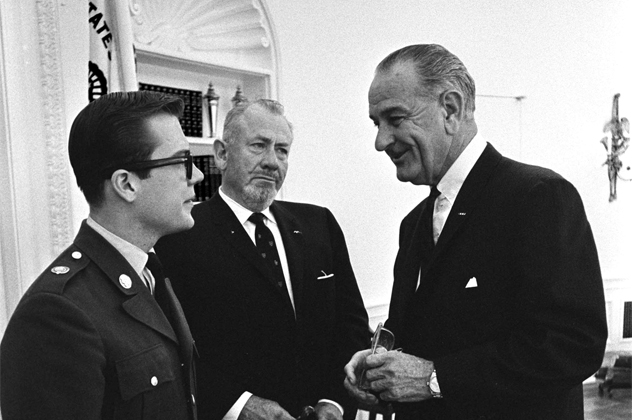
Nobel prize-winning novelist John Steinbeck began his writing career during the Great Depression and connected with many leftists and labor unions. As a result, the FBI exhaustively researched the author, but unfortunately for J. Edgar Hoover, Steinbeck didn’t seem to have any prosecutable skeletons in his closet. To make his life miserable, the FBI arranged for the IRS to audit his taxes every year of his life. In 1942, he wrote to US Attorney General Francis Biddle, “Do you suppose you could ask Edgar’s boys to stop stepping on my heels? They think I am an enemy alien. It is getting tiresome.”
However, there may have been more to Steinbeck than meets the eye. In 1952, he was to be sent to Europe to write articles for Collier’s Magazine. Before he left, he wrote to the CIA offering his services, writing in part, “Again—I shall be pleased to be of service. The pace and method of my junket together with my intention of talking with great numbers of people of all classes may offer peculiar advantages.” Director Walter B. Smith wrote back, asking to see Steinbeck before he left on the trip. What transpired by way of this arrangement remains a mystery.
8 Mafia Capo Gregory Scarpa
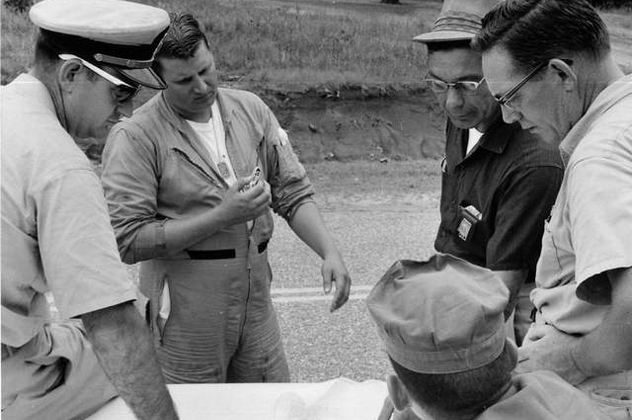
Mafia nicknames are often less than intimidating, but Gregory Scarpa’s savage nature earned him a pretty tough one—“the Grim Reaper.” Scarpa rose through the ranks of the Colombo crime family, but was collared in 1962 for armed robbery. Realizing what a potential asset they had on their hands, the FBI offered him an informant deal, and Scarpa accepted to keep himself out of jail.
Over three decades, the mafioso had a tumultuous relationship with his FBI handlers. He was a brutal, tough man (later in life he would try to self-medicate a bullet wound to the eye by pouring scotch into it), and the agency used that to their advantage. According to some sources, he was sent to Mississippi in 1964 to uncover the fate of three missing civil rights workers. The FBI gave him a gun and bribe money, and sent him on his way. Unencumbered by the regulations which law enforcement agencies are forced to work under, he kidnapped a Ku Klux Klan member from the store where he worked. Scarpa viciously beat the man, then shoved a gun in his mouth until he revealed the location of the men’s graves.
Of course, there was nothing personal about his attack on the KKK member—Scarpa was just doing his job. If anything, he probably would have had a few things in common with the man. We’ve mentioned before how Scarpa met his end—by refusing to take a blood transfusion from a hospital because he was worried that it might contain African-American blood.
7 The Murder Of Tina Isa

Tina Isa was a Palestinian-American teenager who lived in defiance of her family’s traditional values. She held a job outside the home at a local Wendy’s, and had an African-American boyfriend. On the night of November 6, 1989, the girl returned home from work to find her parents, Zein and Maria, waiting for her.
After arguing, Zein Isa told her, “Here, listen my dear daughter, do you know that this is the last day. Tonight, you’re going to die?” We know exactly what he said, because the FBI bugged the house, believing that Zein was working with the Palestinian Liberation Organization. Unfortunately, no one was monitoring the line that night, which recorded seven minutes of horror—Tina begged her mother for help, but her pleas fell on deaf ears. Her mother held her down and her father stabbed her six times in the chest with a boning knife. Whether or not Zein Isa was a PLO affiliate is unknown. Both parents were sentenced to the death penalty. Zein died in prison in February 1997, and Maria’s sentence was commuted to life without the possibility of parole.
6 Geronimo Pratt

Elmer Pratt served two tours of duty in Vietnam, racking up an impressive list of medals. Upon returning home, he studied political science at UCLA by way of the GI Bill. While studying, he fell in with the Black Panthers, changing his name to Geronimo ji-Jaga. Being a decorated vet, he was soon promoted to the organization’s “Minister of Defense.” This affiliation put him in the crosshairs of the FBI. Under COINTELPRO, Pratt was targeted. According to FBI paperwork, their intention was to “neutralize Pratt as an effective BPP functionary.”
The agency got their chance in 1968, when two black men robbed 27-year-old Caroline Olsen and her husband, Kenneth, on a tennis court in Santa Monica, California. When they failed to produce enough cash to satisfy the men, they were riddled with bullets. Kenneth Olsen survived, but Caroline died 11 days later. Pratt was charged with the crime and subjected to a trial orchestrated by the FBI. The full scope of their influence is unknown, but the allegations run deep—information was withheld from the jury, including the fact that Kenneth Olsen, who identified Pratt as his wife’s killer, had previously chosen another man. Even more damning, the FBI “lost” wiretap records that backed Pratt’s alibi.
Despite having famed attorney Johnnie Cochran by his side, Geronimo Pratt was convicted of first-degree murder and sentenced to life in prison. He spent 27 years locked away, eight of which were in solitary confinement. In 1997, his conviction was overturned, because one of the witnesses against him in his trial, Julius Butler (who claimed Pratt had bragged to him about committing the crime) was revealed to be an FBI informant with a history of lying. Pratt was awarded a $4.5 million dollar settlement for false imprisonment. He died in Tanzania in 2011.
5 The Suicide Of Jean Seberg

Jean Seberg was a promising young actress of the 1960s and ’70s who had the misfortune of earning the ire of the FBI. Seberg donated money to several civil rights organizations, including the NAACP, but she crossed the line when she gave money to the Black Panthers. The FBI initiated a vicious smear campaign, including a memo which read: “Bureau permission is requested to publicize the pregnancy of Jean Seberg, well-known movie actress by (name deleted) Black Panther (BPP) (deleted) by advising Hollywood “Gossip-Columnists” in the Los Angeles area of the situation. It is felt that the possible publication of Seberg’s plight could cause her embarrassment and serve to cheapen her image with the general public.”
They went through with their sordid plot, and tragically, Jean went into premature labor. Her daughter died two days after birth. The family held an open-casket funeral to show that the baby had white skin. Seberg sued Newsweek for publishing the article, which she claimed contributed to the premature labor.
Jean was kept under constant surveillance, with wiretaps on her phone and agents following her around. They even broke into her home. Whenever she traveled abroad, they worked with other agencies to keep an eye on her. It is believed that she was blacklisted from various roles. The mounting pressure destroyed her psychologically, and she attempted suicide several times.
On the morning of August 31, 1979, Seberg’s boyfriend woke up alone in their Paris apartment. Sometime during the night, she had left. She was found 10 days later in the backseat of her car. By all appearances, it looked like a suicide; police found barbiturates and a note to her son claiming that she could “no longer live with” her nerves. Her ex-husband immediately blamed the FBI for driving her to take her own life. The death was ruled “probable suicide,” but the Paris police later claimed that someone else would have had to have been present, as her blood alcohol level was so high that she would have been comatose, and no alcohol was found at the scene.
4 MOVE

MOVE was a cult-like group of black liberationists who preached a return to nature. Centered in a Philadelphia row house, this commune had windows covered with plywood, and rotting, vermin-infested compost piles in the backyard. Group members stockpiled firearms and screamed obscenity-laden mantras through a bullhorn into the wee hours of the morning. Frustrated neighbors pleaded with the authorities to do something, and on May 13, 1985, an army of city officials, firefighters, and police officers gathered outside the house to evict MOVE.
The group refused to budge, and police fired tear gas canisters inside. A gun battle ensued, and at 5:30 that evening, a helicopter dropped a C-4 bomb on the house. In the ensuing carnage, 61 houses burned to the ground and 11 people died, including five children. Although a host of emergency personnel stood by, no one did anything to help.
A huge backlash ensued, though no one was charged criminally. A report generated by the city of Philadelphia determined that “dropping a bomb on an occupied row house was unconscionable.” A lot of fingers were pointed, and four years later, some of the blame eventually landed on FBI Special Agent Michael Macys, the agency’s resident bomb expert. Macys had supplied the Philadelphia police with 17 kilograms (37.5 lb) of C-4 a few months before the MOVE incident, for “training purposes.” Bizarrely enough, there was no official record kept of the transfer. Despite being at least indirectly responsible for 11 deaths and the destruction of an entire block, Macys was punished by what could only be described as a slap on the wrist—a month’s suspension without pay.
3 Hitler
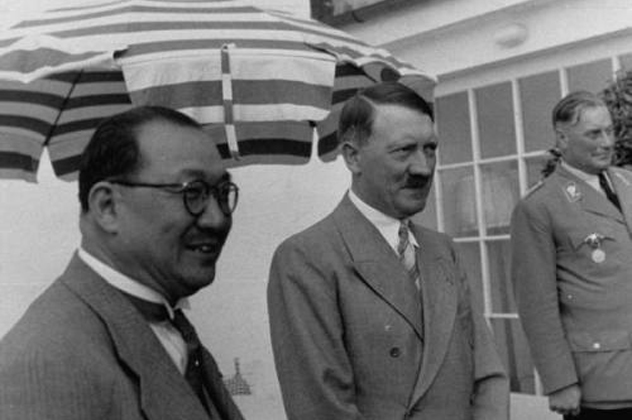
History tells us that as Soviet forces advanced toward Berlin, Adolf Hitler and his new wife, Eva Braun, committed suicide around 3:30 PM on April 30, 1945. Their bodies were partially cremated, then recovered by the Soviets. According to records, the remains were moved several times until 1970, when they were finally fully cremated and the ashes scattered.
Conspiracy theorists have long held that Hitler actually escaped his bunker and traveled to South America, an area notorious for sheltering thousands of other Nazis, including Adolf Eichmann and Josef Mengele. To truly muddy the waters, when President Harry Truman asked Josef Stalin in August 1945 if Hitler really was dead, Stalin replied in the negative. Believing that the fuhrer could indeed be alive, the FBI kept extensive records of Hitler sightings, some more compelling than others. Due to the Freedom of Information act, some of these records are available to the public.
2 Breaking The Law
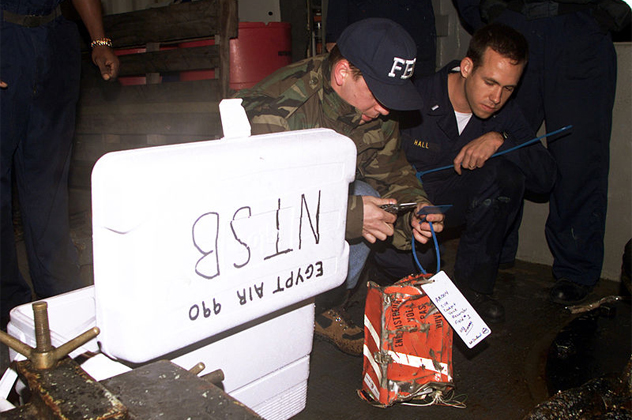
As illustrated by the case of Gregory Scarpa, the FBI can be quite ruthless while trying to achieve a goal. This includes authorizing their estimated 15,000 informants to commit thousands of crimes per year. According to a document released by the FBI, they allowed 5,658 crimes to be committed in 2011 alone—over 15 per day.
Unfortunately, the report does not specify the nature and location of these crimes, but given that the FBI once allowed Boston mobster James “Whitey” Bulger to run a murderous crime ring while working with them in the 1970s, one can imagine that some seriously horrifying things are being perpetrated with Uncle Sam’s approval.
1 The Woman In Red
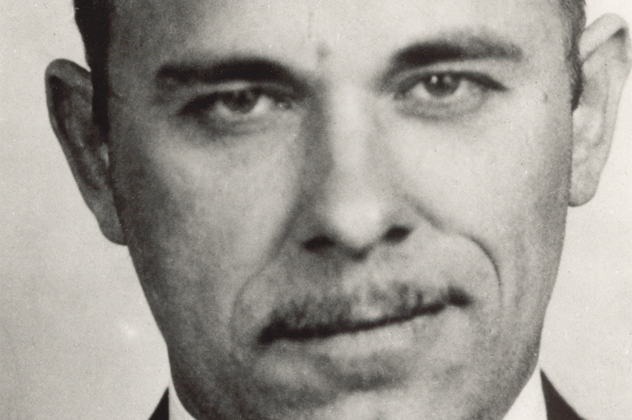
Lest the last item give you the impression that being an FBI informant is a license to commit crimes, consider the tragic story of the “Woman in Red.” Ana Cumpanas was a Romanian who moved to the United States in 1909. After a pair of failed marriages, Ana took up prostitution as a way to make ends meet. Unfortunately, she was soon labeled an “alien of low moral character,” and threatened with deportation. Luckily, a gentleman named John Dillinger began frequenting the brothel where she worked.
By this point, John Dillinger was the most wanted man in America, a man brazen enough to rob police stations. There was a $10,000 bounty on his head (about $175,000 when adjusted for current inflation). Ana figured that by turning him in, she could find a way to stay in the country and make a tidy profit on the side. She went to the FBI, where they cooked up a scheme. Ana, a girlfriend, and Dillinger would go to a movie, where she would wear orange (although it was later described as red) to distinguish herself, allowing an agent to nab the bank robber.
Dillinger was confronted by FBI agent Melvin Purvis and attempted to flee, but was mowed down by a volley of gunfire. With the gangster dead, Ana was of no further use to the FBI, and they quickly reneged on their promises. She was only given half of the reward money, and was deported the following year. Some claim that Ana was so crudely treated because she had nothing further to offer the agency, but others say that there was a darker conspiracy at hand. They purport that the man killed at the theater wasn’t Dillinger but a look-alike, and Ana was sent back to Romania to keep her quiet about her role in the scheme. Unfortunately, there’s no way to ask her—Ana died of liver failure in 1947.
Mike Devlin is an aspiring novelist.








